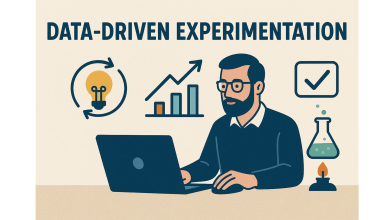Inflation, price hikes, and heightened global competition are causing crippling damage to businesses across virtually every industry. As the supply chain crisis continues into its third consecutive year, with the pull of external factors weaving into the disruption, the option to wait for the uncertainty to pass is no longer a legitimate strategy.
It is clear that holding the ability to navigate threats to business survival is paramount, but only when businesses introduce innovative systems that can visualise and accurately predict future threats, as well as preserving control through each sector of the business, can this be effectively achieved.
Enterprise resource planning (ERP) has played a key role in increasing internal efficiencies to future-proof vital business operations. Across finance, ecommerce, and human resources activities, ERP systems have integrated these various functions under one complete system. In doing so, they have enhanced the ability of businesses to analyse their performance across various benchmarks, reduced the amount of time lost each day carrying out repetitive tasks, and encouraged cross-collaboration between departments. As a result, ERP has provided valuable assistance in breaking down barriers and streamlining operations across an entire organisation.
Data is the key ingredient underpinning the success of ERP systems. With 98% of organisations stating that high quality data is important in achieving their business objectives, and 85% viewing this as one of the most valuable assets to their business, the impact of enhanced insight and evaluation provided by data is indisputable.
The limitations: inaccurate data management
Although ERP systems have revolutionised the ability of organisations to increase day-to-day efficiencies, evidenced by the 50% of directors experiencing improved customer service and 45% believing they have enabled greater insight for decision-making purposes, increased data availability isn’t without its faults.
94% of businesses believe the data they hold is inaccurate, and half (51%) believe that the data collected by their ERP systems isn’t clean enough to be utilised. Concerningly, 78% of directors have reported problematic data debt as a result, and nearly one-third of analysts spend nearly more than 40% of their time vetting and validating data collected from analytics before it can be leveraged for strategic decision-making. Despite the shocking number of businesses negatively impacted by initiatives intended to drive efficiency, and businesses losing at least 30% of their revenue as a result, many directors are choosing to avoid restorative measures due to the misconception that ROI on data correction is very low.
Triggering growth with big data
High volume and high variety, big data can be incredibly difficult to capture with a traditional ERP system. The introduction of big data analytics – the use of advanced techniques to process very large and diverse data from different sources – has provided a way to combat this challenge and capture previously unattainable, and therefore wasted, sets of data. This advancement is vital given that 99% of ERP professionals face ongoing obstacles to keep data flowing, including integration and incompatibility issues.
With 85% of ERP specialists stating that stagnant data has led to incorrect decisions and poor business outcomes, the original intention of ERP to enhance efficiencies is at risk of being undermined, and in some cases, reversed altogether. Combined with the current economic threats to revenue and market position, organisations cannot afford for these avoidable inefficiencies to dominate their internal processes.
However, by eliminating the components typically associated with poor data, namely incomplete, invalid, and non-standard data that cannot be processed by ERP systems in isolation, big data provides businesses with purposeful insights to unlock unprecedented growth.
Whether it is pandemic-driven shortages, the influence of Brexit or the war in Ukraine, the future of the supply chain is unpredictable. However, big data analytics offers organisations the chance to mitigate further complications by engaging with each stage of the supply chain. This increased visibility allows businesses to gain a better understanding of customer preferences and buying patterns to prevent overstocking materials. In other cases, big data highlights when routes involved in the flow or products and their movement within the wider supply chain are causing productivity and profit losses. As procurement accounts for 43% of an organisation’s total costs, the value of agile supply chain management cannot be understated.
Final thoughts
Amidst the growing global competition, it is essential that businesses analyse methods to alleviate glaring economic pressures and strengthen their position as a market main player. Whilst many businesses may underestimate the role of effective data management systems in achieving this goal, the reality is very different.
The high-value insights developed by big data and ERP integration can shape the prospects of an entire organisation. Not only does optimised inventory, scheduling and customer awareness strengthen an organisation’s ability to survive future volatility, but it also supports its long-term plans by increasing revenue and driving further growth plans.
Evidenced by the $273.4 billion prediction for the big data market by 2026, businesses that prolong their investment in big data solutions risk moving further behind competitors with detrimental efficiency, productivity, and revenue losses.



